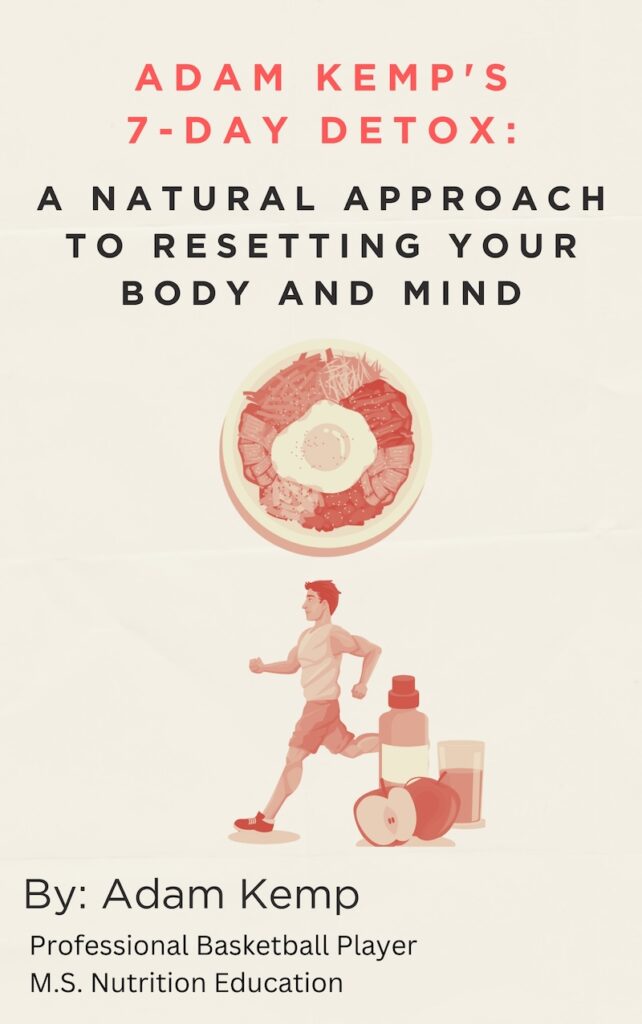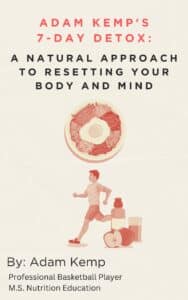Tips for Fighting Exercise Fatigue Like a Pro Athlete
Fighting exercise fatigue is a defining skill that separates elite performers from those who burn out early.
After more than a decade as a professional basketball player, I have learned that managing fatigue is not just about training more or less but about understanding how the body and mind respond to stress over time.
The most successful athletes I’ve played with consistently use specific strategies that allow them to keep training, stay explosive, and avoid overtraining syndrome.
Scientific research also confirms that fatigue management is one of the most important factors for long-term athletic development, performance, and injury prevention (Ansley et al., 2009).
What makes these methods powerful is that they work for everyday people just as well as they work for pro athletes, whether someone is lifting weights, training for a marathon, or trying to stay active as they age.
My own experience studying how to become a professional athlete showed me that recovery, nutrition, psychology, and strategic rest patterns are just as important as sets and reps.
These are the same proven strategies I use, my teammates use, and that research supports for fighting exercise fatigue.
Why Is It Important to Manage Fatigue Properly
Managing fatigue properly protects performance, reduces injury risk, and supports long-term athletic development.
When fatigue accumulates faster than the body can recover, performance declines and injury risk increases, even if training load stays the same (Soligard et al., 2016).
Chronic fatigue also disrupts neuromuscular coordination and reaction time, which is why overtrained athletes often feel “sluggish” or mentally foggy during workouts or games.
Studies show that excessive fatigue negatively affects decision-making, mood, and motivation, creating a psychological burden that can derail months of consistent training (Meeusen et al., 2013).
Proper fatigue management allows the nervous system, muscles, and connective tissues to adapt instead of breaking down, which is ultimately how strength and endurance improvements occur.
This is especially important for people who train regularly but also work full-time jobs, manage stress, or sleep less than ideally, since lifestyle fatigue compounds physical fatigue.
Athletes who monitor and manage their fatigue levels perform better across an entire season and are more likely to improve year after year, rather than burning out early in their careers.
Proactive fatigue management is not about doing less; it’s about recovering better so you can train harder, longer, and with fewer setbacks.
Understanding the Exercise Recovery Pyramid
The exercise recovery pyramid is a framework that ranks the most important elements of recovery from foundational to optional, helping athletes prioritize what truly matters.
Even before the base of the traditional recovery pyramid, the true foundation is training within the optimal workload zone by staying above the minimum effective training volume required to produce adaptation, yet below your maximum recoverable volume that would push you into accumulated fatigue.
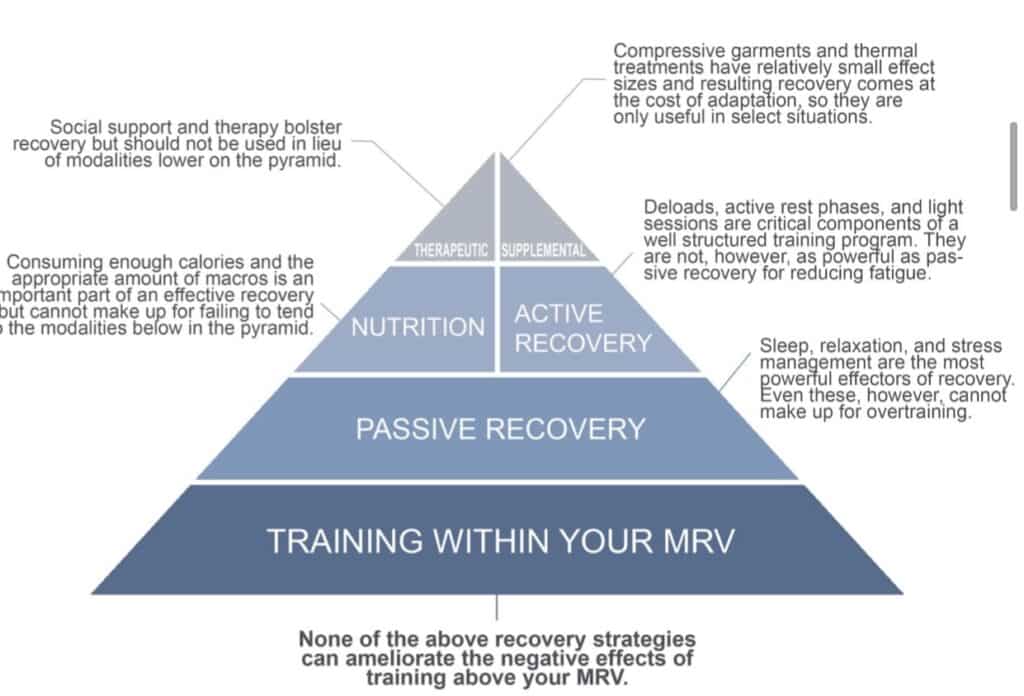
At the base of the pyramid is sleep, which is consistently shown to be the single most influential factor in muscular repair, hormonal balance, and nervous system recovery (Fullagar et al., 2015).
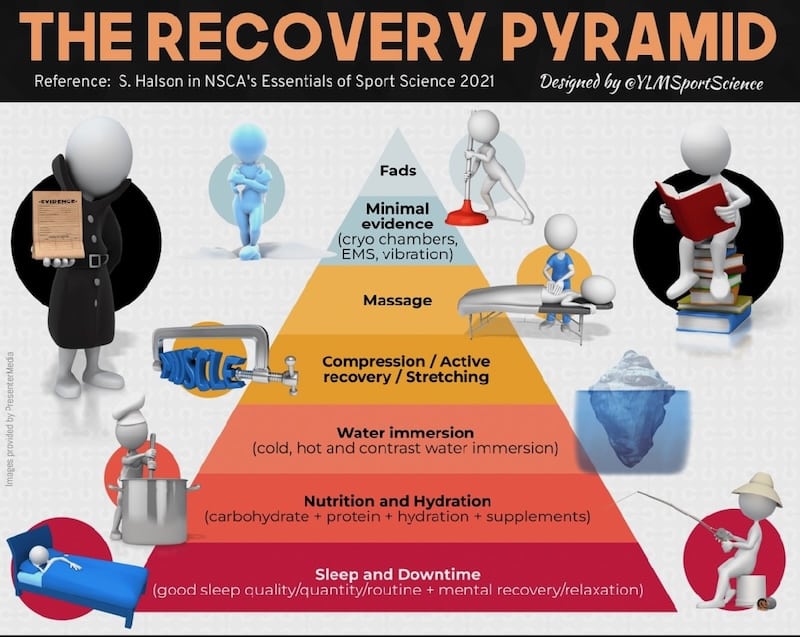
The next layer includes daily nutrition and hydration, since consistent fueling allows muscles to replenish glycogen, repair tissue, and maintain immune function.
Above that sits active recovery and mobility work such as light cardio, stretching, and self-myofascial release, which promote circulation and reduce stiffness without adding additional stress.
Only near the top do supplemental tools like ice baths, compression devices, sauna sessions, or massage guns come into play.
They are helpful, but not replacements for foundational healthy habits.
Understanding this structure prevents athletes from relying on gadgets while neglecting sleep, food quality, or workload management.
The most successful performers master the bottom layers first, then strategically layer in advanced techniques to stay ahead of fatigue and training stress.
How to Manage Exercise Fatigue Like a Pro Athlete
Managing fatigue like a pro athlete begins with understanding that exercise recovery is a skill, not an accident.
Elite performers don’t wait until they feel exhausted to make changes; they monitor their bodies daily and use proven strategies to maintain peak output while reducing the risk of burnout or injury.
The same methods used in professional locker rooms can help anyone train harder, recover faster, and feel better during everyday workouts.
They Watch For Signs Of Fatigue
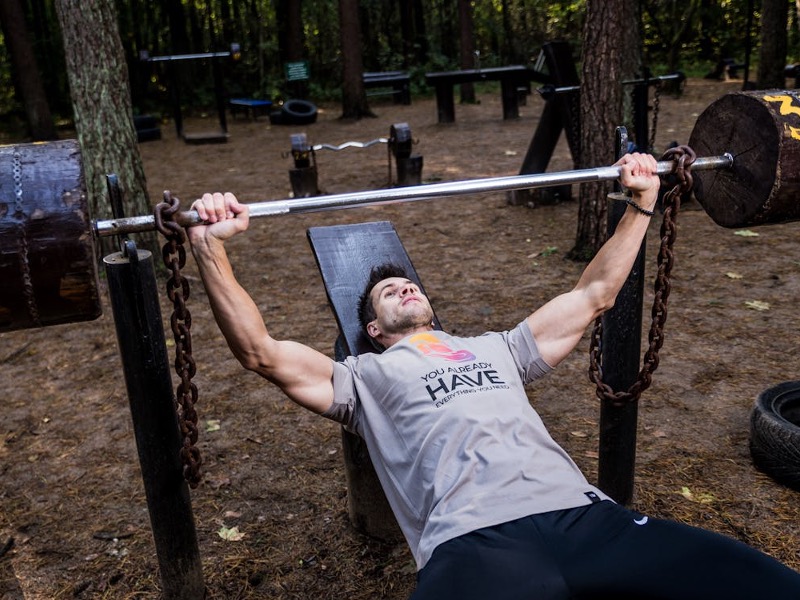
Pro athletes learn to recognize the earliest signs of fatigue long before their performance noticeably drops.
Minor signals such as eye twitching, unusual cravings, or an elevated resting heart rate often appear before full exhaustion sets in.
Research shows that these small changes reflect nervous system stress and can indicate the body is struggling to maintain balance (Kreher & Schwartz, 2012).
Instead of pushing harder, elite performers treat these signals as a cue to adjust their workload, prioritize sleep, or increase recovery efforts.
This approach prevents fatigue from snowballing into injury, burnout, or chronic overtraining.
It isn’t a lack of motivation; it’s a sign of high-level body awareness and respect for physiological limits, which ultimately allows them to train harder over time.
They Design Recovery As Part Of Their Work
Elite athletes treat recovery with the same seriousness as strength training, conditioning, or skill work.
They understand that adaptation happens during rest, not during the workout itself, which makes recovering faster after workouts a vital part of long-term performance.
This is why many pros follow strict sleep schedules, limit screen exposure at night, and avoid late social events that interfere with restorative sleep.
Recovery is not passive downtime; it is an active process that includes nutrition, hydration, stress management, and sleep hygiene.
By planning recovery with intention, athletes consistently return to training sessions stronger, more explosive, and less susceptible to injury.
They Use Psychological Buoyancy
Professional athletes intentionally cultivate psychological buoyancy, allowing them to stay mentally steady even when physical fatigue sets in.
Research shows that maintaining a positive mindset reduces perceived exertion, improves recovery quality, and lowers the risk of overtraining-related burnout (Akram et al., 2025).
During long recovery windows, most of an athlete’s day is spent resting, doing light rehab work, or handling small tasks, which can feel monotonous without a sense of purpose.
To counter this, pros build supportive environments, lean on close friends and teammates, and stay focused on long-term goals rather than daily discomfort.
This blend of optimism, accountability, and emotional stability helps them recover more efficiently and return to training with renewed motivation.
They Use Caffeine Strategically
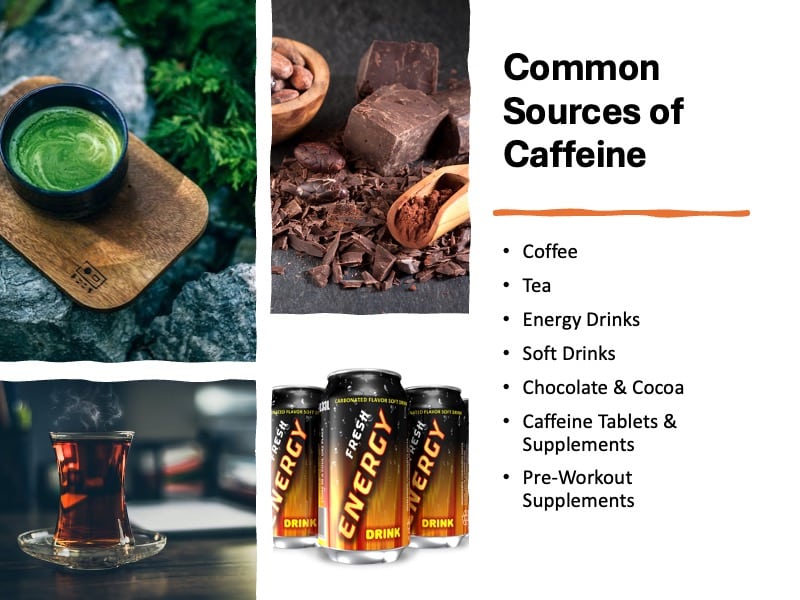
Another thing that pros do when battling fatigue is to use caffeine strategically.
Instead of just guzzling coffee all day, they use it at the time when it has maximum effect.
For example, many athletes wake up in the morning, have coffee, and then hit the gym straight away.
This combination is often explosive, leading to the best training sessions.
Another thing they do is drink coffee and tea early in the day.
This way, their bodies can process the caffeine, and they can sleep better at night.
It’s not that caffeine is necessarily bad.
Most studies show positive effects from beverages, like green tea.
It’s just that it can provide excessive stimulation if used incorrectly, interrupting sleep, and leading to worsened recovery.
They Keep Moving Before Collapsing
Athletes will often tell you that the most dangerous time for them is when they feel like stalling.
They have a sense that they’re about to conk out, and there’s nothing they can do about it. They’re like an old car on its last legs.
When this happens, they find a way to keep moving.
They do something gentle, yet energetic, to reinvigorate themselves.
For example, they might go on a brisk walk outside in the cold weather.
They might also go up and down the stairs a couple of times.
This gets their blood moving, making them less likely to stall and ultimately getting them back to their work faster.
Of course, if it’s bed time, then by all means collapse and go to sleep.
But if you’re looking to stick to a rigorous sleep schedule, keep moving.
They Look For Energy-Boosting Substances
You will also often see pro athletes seeking energy-boosting substances.
These purportedly help them keep going for longer, reducing fatigue and enhancing their recovery, and can be a good option, especially in the run-up to a major competition.
For this reason, many athletes look for natural substances, like CBD or kratom.
What is kratom? Essentially, it’s an energising leaf from Southeast Asia that has been used by traditional communities for thousands of years.
L-citrulline and arginine can also be stimulating for some people.
These compounds, found in some fruits and vegetables, dilate the veins and arteries, potentially boosting performance and enhancing gym-based outcomes.
They Build Micro-Breaks Into Their Workflows
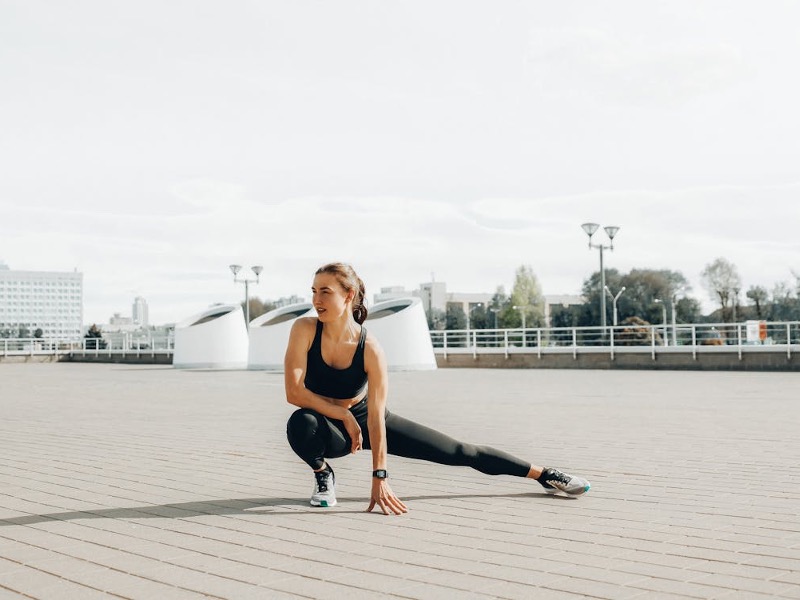
Another thing the pros do is strategically place micro-breaks in their protocols.
They aren’t afraid to stop for a while if it means they are more likely to get more done in a given day.
A micro-break is a bit like mental oxygen. It’s something that office workers do as well when the cognitive load of their work becomes too extreme.
These little breaks essentially give the brain time to remove byproducts of the thinking process and then address the next task.
The same is true when someone is training hard.
These little breaks can have a profound impact.
They Aim For Nutrient Density
You also see a lot of the best athletes focusing on the foods with the highest nutrient density.
They want to ensure they get the most out of their meals.
Nutrient density matters, yet it remains undervalued in many athletic circles, as the traditional culture of eating rice and chicken at every meal remains strong.
The trick is to eat a balanced diet full of foods, such as greens, sweet potatoes, beans, and seeds, that contain many compounds that help people who are training.
Pros know this, so most of them eat a variety of the healthiest foods on the planet to get the results their fans see.
What’s more, when the pros add a lot of ingredients to a dish, it actually improves the flavor.
This then makes being an athlete more sustainable and something that people want to stick with in the long term.
They Use Hydration Seriously
Hydration is a serious pursuit for many athletes, and one they take very seriously, if you ask them.
They know that they need enough water in their body to adapt and benefit from training.
As such, hydration isn’t an afterthought. It’s something they bring with them wherever they go and whatever they do.
You’ll often see the pros sipping steadily from their bottles, getting the water and other nutrients they really need.
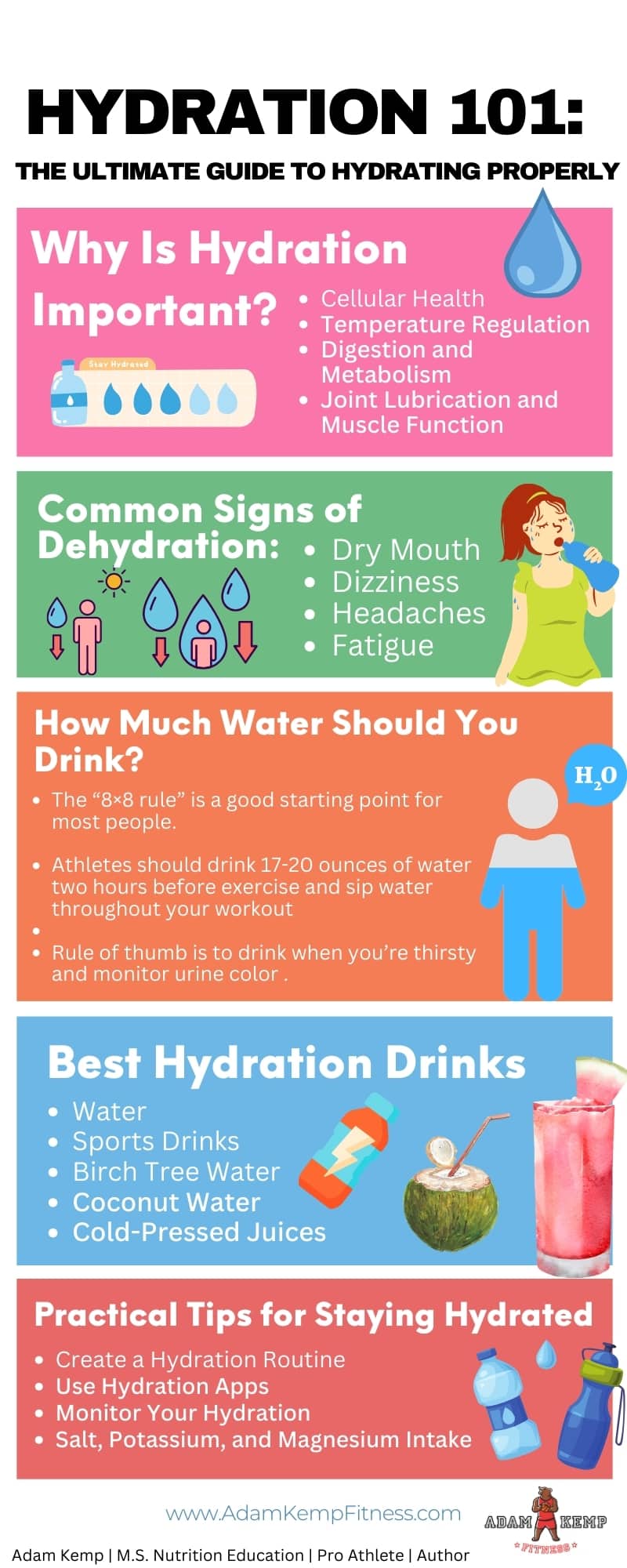
They Use as Many Recovery Tools as Necessary
Professional athletes rely on a wide range of muscle recovery tools to manage fatigue and maintain high training volume without breaking down.
Self-massage tools such as percussive massage guns and foam rollers are used daily to reduce muscle tension, improve tissue quality, and speed circulation to fatigued areas.
Research suggests that these techniques can increase range of motion and decrease soreness without impairing strength or performance (Cheatham et al., 2015).
Cold exposure methods, including ice baths or contrast baths, are used to decrease inflammation and calm the nervous system after intense sessions, while sauna sessions may stimulate heat-shock proteins and support cardiovascular recovery (Scoon et al., 2007).
Rather than relying on only one strategy, elite athletes rotate methods based on training load, travel demands, injury history, and personal response.
The mindset is simple: every tool that reduces fatigue and accelerates recovery is worth considering, especially when long seasons or heavy training cycles demand consistent output.
They Create A Daily Rhythm
Finally, you’ll observe that many pros are obsessed with their daily routines, waking times, and bedtime.
This isn’t just for Instagram: it’s rooted in science.
People who go to bed and wake up at the same time every day have better overall health and generally feel less fatigued.
They have more energy to attack the day and really make a difference in their chosen sports.
The morning is typically the most productive part of the day for exercise.
The afternoon is for eating, recovery exercises, and honing techniques.
This website does not provide medical advice. This website site does contain affiliate links, and purchases may earn a commission.
Read my Medical Disclaimer, Review Disclaimer, and Publishing Policies for more details. Use of this site indicates acceptance of these terms.


